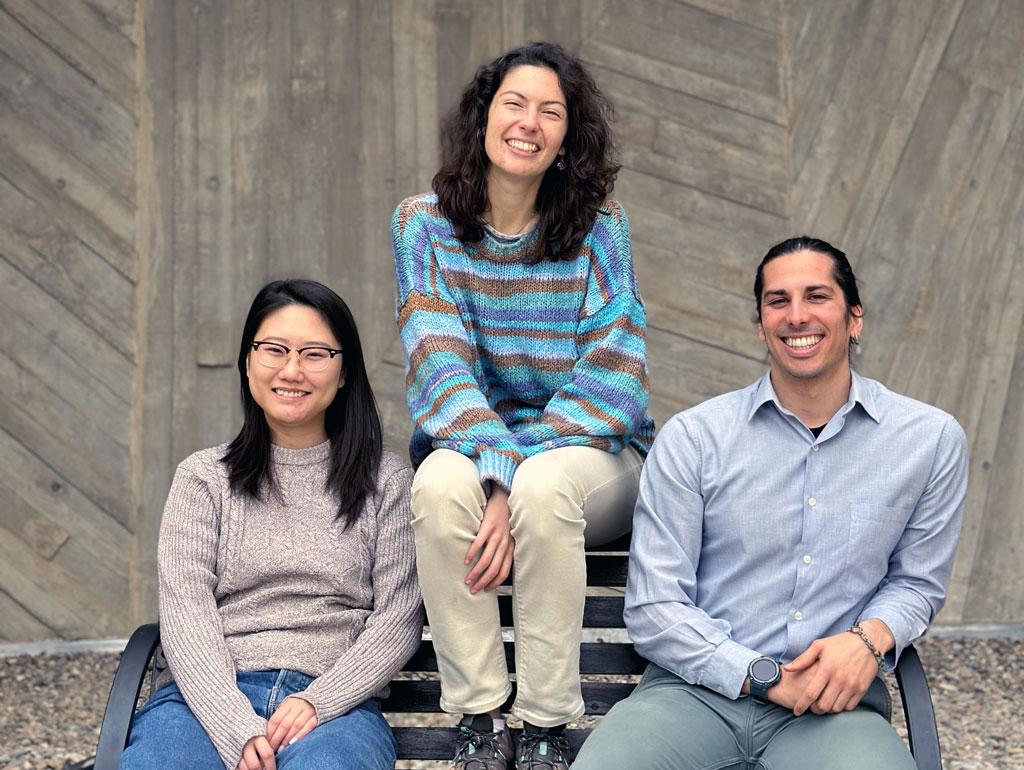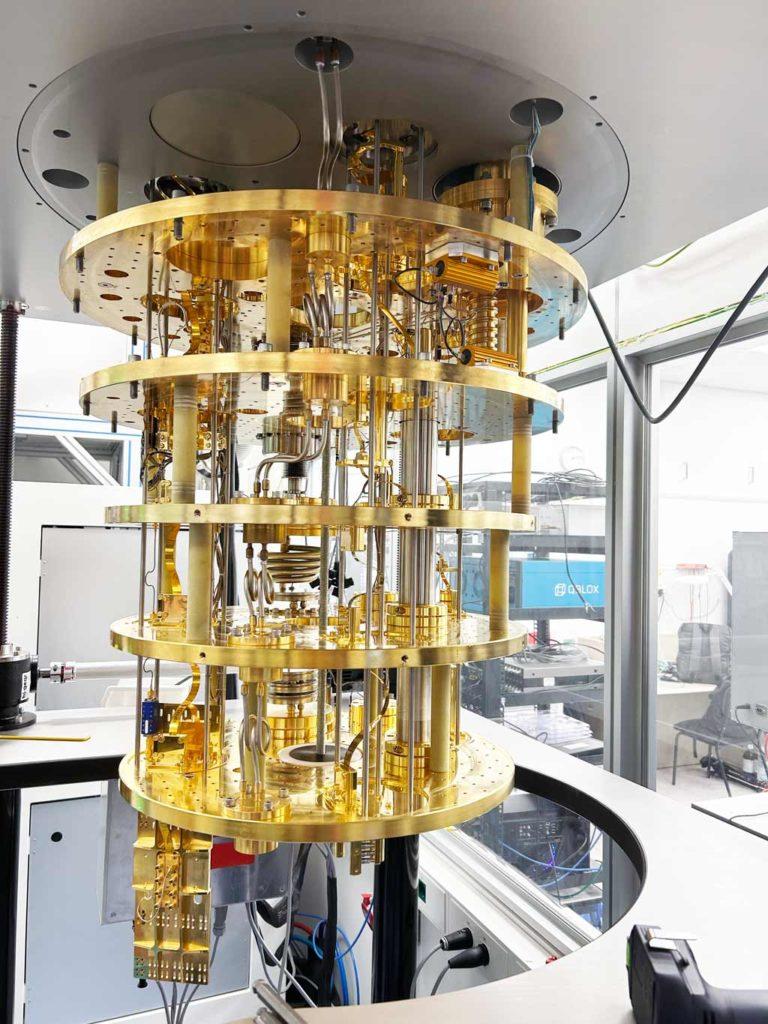
Qilimanjaro Quantum Tech, a pioneering start-up
Qilimanjaro Quantum Tech is one of the pioneering companies in the development of quantum technology in Europe. His extensive experience developing research projects applied to this technology highlights his desire to lead the construction of the first commercial quantum computer, working to democratize access to quantum computing. In an interview with Marta Pascual Estarellas, current CEO of the company, he explained Qilimanjaro's work in the creation of quantum algorithms and hardware to facilitate access to quantum computing in industries and research centers, using an analog computing model different from existing quantum solutions.
The company has developed 9 industrial doctoral research projects, collaborating with the University of Barcelona (UB), the Polytechnic University of Catalonia (UPC), the Autonomous University of Barcelona (UAB), the Barcelona Supercomputing Center (BSC) and the Institute of High Energy Physics (IFAE). In recent years it has achieved great financial successes, highlighting its position as one of the key companies in the quantum computing sector to be taken into account. Recently, it has been the winner of the prestigious 4YFN Awards 2024 for the best startup, within the framework of the Mobile World Congress held in Barcelona last February this year.
David Eslava, the industrial doctoral student at the head of a strategic project

On this occasion we wanted to talk to David Eslava, PhD student at the Autonomous University of Barcelona (UAB), and industrial doctoral student who leads a new project in collaboration with this university with a strategic objective for the company: the urgency of having its own infrastructure in quantum computing, focused on the development of full-stack quantum processors (QPUs). To clarify the concept, it is a processor that integrates all the functions necessary for quantum computing in a single device, from the physical hardware to the software that supports it.
Specifically, Eslava is working on the development of a microwave technology for quantum processors. As he explains, his involvement in this project is a unique opportunity that places him at the frontier of knowledge, helping to define the future of computing. This challenge not only raises previously unexplored scientific and technological questions, but also opens the door to the creation of new solutions with the potential to radically change how we process information: "Every discovery and breakthrough in the development of microwave technology for quantum computers is a small step towards a more promising and exciting future, and this deeply motivates my dedication to this innovative project," says Eslava. His participation in this project allows him to collaborate with experts from various disciplines, thus promoting an interdisciplinary environment that is so relevant when we talk about collaborative and applied research.
As mentioned before, the Qilimanjaro project was born from the urgency of its own quantum computing infrastructure. This initiative, which involves physicists, software engineers and telecommunications electronics engineers, is aligned with the company's vision to build one of the first generations of European commercial quantum processors. But Qilimanjaro is not alone in her race to build the first commercial quantum computer, the competition in this sector is fierce, with large corporations such as IBM, Google and Microsoft investing large amounts of money in research and development. These initiatives indicate a growing interest in quantum computing in Europe, positioning the continent as a major player in the development and application of this disruptive technology on an international scale. In fact, the EU considers quantum computing as a strategic technology and is working to develop a "world-class quantum ecosystem".
In this strategic line, Spain is taking significant steps to become a pioneer in quantum computing in southern Europe. The Barcelona Supercomputing Center – National Supercomputing Center (BSC-CNS) and its collaboration with Qilimanjaro are one of the most significant examples of these strategic initiatives and collaborations.
Practical applications of quantum computing
The concept of "quantum" has become a fashionable topic, and is discussed in many areas. On the one hand, there are interpretations that, without scientific basis, try to apply the principles and phenomena observed on the quantum scale (i.e. in the world of subatomic particles) to aspects of daily life or even to human consciousness. On the other hand, we have quantum physics, which is the scientific study of these phenomena, which offers a new way of understanding nature and has a great impact on our understanding of reality. In addition, the discoveries in this scientific field have practical applications in advanced technologies that affect our daily lives.
Much can be written about the practical applications in the field of technology: quantum communications, nuclear magnetic resonance imaging (NMR) based on quantum physics, or the extreme sensitivity of quantum sensors, among many others. But in this article we focus on one of the several applications of quantum physics: quantum computers.
According to the CEO of Qilimanjaro, a quantum computer is a computing system that makes use of a different logic from that of conventional computers, using very small systems ( qubits) that are governed by the laws of quantum mechanics. First of all, it is essential to understand that a qubit (the quantum bit) is the basic unit of information in quantum computing. That is, it would be the quantum equivalent of the classical bit used in conventional computers. While conventional computers use bits as a unit of information, which can be 0 or 1, qubits, on the other hand, can be 0, 1 or a superposition of both at the same time, thanks to quantum mechanics. This allows quantum computers to perform certain calculations much faster than traditional computers. Eslava also further refines the difference between quantum computing and classical computing that most of us know: "quantum processors use quantum properties such as superposition and entanglement that allow information to be processed and transmitted in a radically different and more efficient way than classical processors".
The innovative technology of the project, microwaves to control qubits

Qilimanjaro Quantum Tech differentiates itself from the competition for its innovative microwave technology to control qubits, and this is precisely the line of research of David Eslava's project. Essentially, the project works on the development and validation of cryogenic microwave interfaces to measure and control quantum processing units (QPUs). We are talking, therefore, about specialized devices that allow microwave signals to be sent and received to qubits, to control the state of the qubits and perform quantum operations.
Superconducting quantum processors, the core of quantum computers, use qubits based on superconducting materials. To understand the concept, we can imagine that QPUs are like the "brains" of quantum computers, and these interfaces must operate at extremely low temperatures to prevent the qubits from losing their coherence. On the other hand, cryogenic microwave interfaces work as specialized connectors that allow us to interact with these QPUs, sending them signals and receiving responses from them. In short, these conditions are necessary for qubits, the fundamental components of these quantum computers, to function properly.
The main obstacle in the commercialization of superconducting quantum processors is the fragility of quantum information. Qubits are very sensitive to external interference, therefore, they need a controlled environment, so Eslava works on the manufacture of QPU prototypes, designing and building models of these quantum processing units to be able to experiment in these controlled environments, developing methods for their reading, characterization and calibration. The infrastructure developed by Qilimanjaro Quantum Tech guarantees the optimal conditions for the operation of the qubits. In order to control these qubits, microwave pulses are used at frequencies around 5 GHz, a technology similar to that used in 5G, but with some modifications. Microwave pulses can be used to change the state of qubits, for example, to make them go from 0 to 1 or vice versa.
The practical application of the technology that Eslava is working on with his project
According to him, Qilimanjaro is working on algorithms to optimize logistics services, or even simulate molecules with qubits. In the first case, quantum computers can optimize transport routes, reducing costs and CO₂ emissions, or optimize fleet planning, reducing downtime and fuel consumption. In terms of molecule simulation, quantum computers can simulate the behavior of molecules at the atomic scale, accelerating the development of new drugs and materials.
The Qilimanjaro Quantum Tech S.L. project represents a great advance in quantum computing, with transformative potential in many areas. Its innovative technology, which combines microwaves and quantum computing, opens up new possibilities in security, logistics, pharmaceuticals and many more sectors. This pioneering initiative not only boosts technological progress, but also lays new foundations for future research and practical applications. Collaboration between academic institutions, technology companies, and government entities has created an ideal ecosystem for innovation in this field.
The challenges and discoveries that have emerged over the course of the project demonstrate the potential of quantum computing to radically change the way we process and use technology. The future of this technology is bright and promises to open new frontiers in our world.

